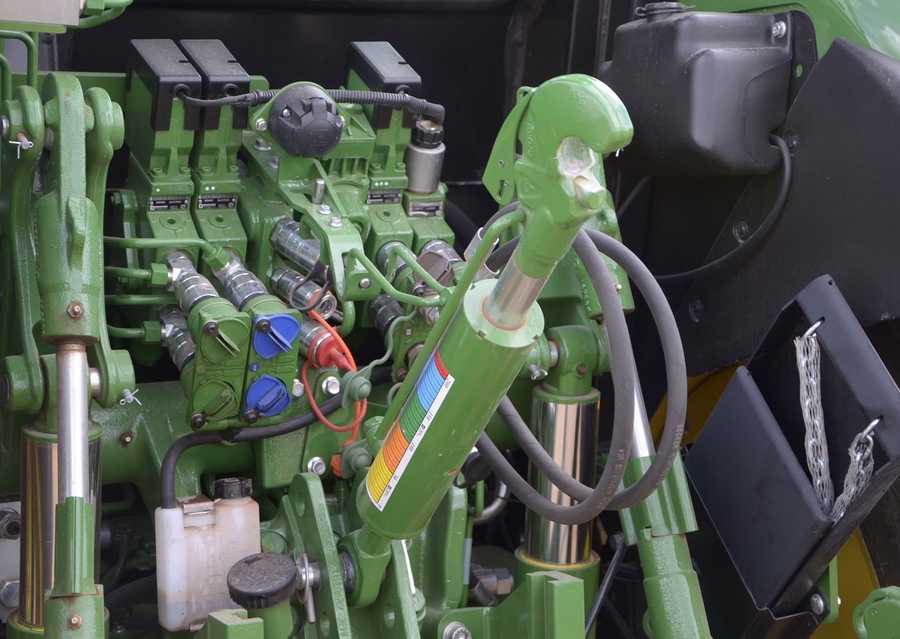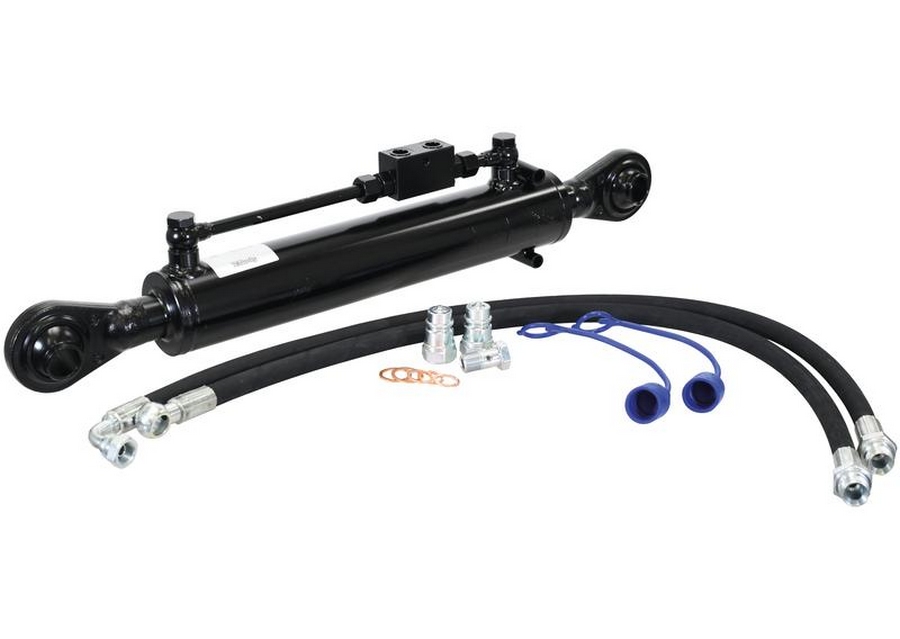Hydraulic Top Link: Enhancing Tractor and Agricultural Equipment Efficiency
In the world of modern agriculture and heavy machinery, hydraulic systems have revolutionized the way equipment operates, providing unmatched flexibility, precision, and power. Among the key components of these systems, the hydraulic top link stands out as an essential part of tractors and other agricultural machines, offering significant improvements in performance and versatility.
What is a Hydraulic Top Link?
A hydraulic top link is a critical component in the three-point hitch system of agricultural tractors and equipment. Positioned at the rear of the tractor, it connects the tractor’s rear linkage to the implement, such as plows, harrows, and mowers. The hydraulic top link functions by adjusting the angle of the implement, allowing operators to change the position of the tool without leaving the tractor seat. This is achieved by controlling the hydraulic fluid pressure to extend or retract the top link, providing enhanced control and flexibility in field operations.
Importance of the Hydraulic Top Link
The hydraulic top link is indispensable in many agricultural operations. Here’s why it’s so important:
-
Increased Control and Precision: The hydraulic top link allows operators to adjust the angle of the implement quickly and accurately. This is essential for tasks that require precision, such as plowing, tilling, or leveling. Having the ability to make adjustments on the go without manually repositioning the implement ensures better performance and reduces the risk of damage to the equipment.
-
Efficiency and Time-Saving: Without a hydraulic top link, operators would need to manually adjust the top link, which can be time-consuming and physically demanding. With hydraulic control, these adjustments are made quickly, reducing downtime and increasing productivity in the field.
-
Improved Safety: The ability to adjust the top link from the safety of the tractor’s seat minimizes the need for operators to move around heavy equipment. This reduces the risk of injury and enhances overall operational safety, especially in rough terrain or adverse weather conditions.
-
Versatility: The hydraulic top link is suitable for a wide variety of applications, making it a versatile addition to a tractor. Whether you’re working with plows, cultivators, or seeders, the hydraulic top link can easily adjust the position of the implement to suit the task at hand.
How Does a Hydraulic Top Link Work?
A hydraulic top link works by using hydraulic fluid to extend or retract the link. The hydraulic system on the tractor controls the fluid flow through the hydraulic cylinder connected to the top link. By adjusting the fluid pressure, the operator can change the length and angle of the top link to achieve the desired position of the implement.
The hydraulic top link typically features:
- Hydraulic Cylinder: The cylinder is responsible for the extension and retraction of the top link, powered by the tractor’s hydraulic system.
- Top Link Arm: The adjustable arm connects the tractor to the implement, providing the necessary range of motion.
- Quick-Release Mechanism: Some hydraulic top links come with a quick-release feature, enabling easy attachment and detachment of implements, saving time during field operations.
Benefits of Using a Hydraulic Top Link in Agriculture
-
Enhanced Field Performance: By providing easy adjustments to the implement angle, a hydraulic top link ensures better field performance, resulting in improved soil cultivation, seedbed preparation, and crop management.
-
Reduced Wear and Tear: Precise control of the implement’s angle reduces stress on the machinery and the soil, preventing unnecessary wear and tear on the equipment. It also helps to avoid damage caused by incorrect positioning.
-
Versatility Across Implements: A hydraulic top link can be used with a wide range of implements, including plows, harrows, and mowers. This makes it an ideal investment for farmers and contractors who need to use various implements for different tasks.
-
Comfort and Convenience: The hydraulic top link eliminates the need for manual adjustments, making it more convenient for operators who can remain in the tractor seat while performing adjustments. This convenience improves comfort during long hours of operation.
-
Improved Soil and Crop Quality: With better control over the implement’s position, the hydraulic top link ensures uniform soil penetration and better seedbed preparation. This can lead to improved soil health, increased yields, and better crop quality.
Applications of Hydraulic Top Links
Hydraulic top links are commonly used in various agricultural applications, including:
-
Plowing and Tilling: Adjusting the top link during plowing ensures the plow remains at the correct angle for optimal soil cutting. This improves soil aeration and facilitates efficient seedbed preparation.
-
Mowing and Cutting: When using mowers, the hydraulic top link allows operators to adjust the cutting height or angle, providing more efficient cutting and reducing the risk of scalping.
-
Harrowing and Cultivating: For harrows and cultivators, the hydraulic top link ensures the correct positioning of the implement, allowing for consistent tilling and even soil coverage.
-
Seeding and Fertilizing: With a hydraulic top link, farmers can fine-tune the position of seeders and fertilizer spreaders for more accurate placement of seeds or fertilizers.
Choosing the Right Hydraulic Top Link
Selecting the right hydraulic top link for your tractor depends on several factors:
-
Compatibility with Tractor: Ensure that the hydraulic top link is compatible with your tractor’s hitch and hydraulic system. Most modern tractors have standard fittings, but it’s always important to check specifications.
-
Hydraulic System Capacity: The hydraulic system’s capacity should match the requirements of the hydraulic top link. Check the tractor’s hydraulic flow rate to ensure it can handle the pressure needed for smooth operation.
-
Length and Adjustment Range: Choose a hydraulic top link with an appropriate length and range of adjustment to accommodate the specific implements you plan to use.
-
Quality and Durability: Since hydraulic top links are subject to constant stress, it’s crucial to select a high-quality, durable product made from robust materials to withstand harsh conditions and prolonged use.
Maintenance of Hydraulic Top Links
Regular maintenance is essential to ensure the longevity and performance of your hydraulic top link. Here are some maintenance tips:
-
Inspect Seals and Fittings: Check for any leaks around the seals or fittings. Hydraulic fluid leaks can affect the performance of the system and reduce its lifespan.
-
Lubricate Moving Parts: Apply lubrication to moving parts, such as joints and pins, to prevent wear and ensure smooth operation.
-
Check Hydraulic Fluid: Ensure that the hydraulic fluid is clean and at the correct level. Contaminated or low fluid can cause the system to perform poorly.
-
Clean the Cylinder: Dirt and debris can damage the hydraulic cylinder. Regularly clean the cylinder to prevent contamination from entering the hydraulic system.
Conclusion
The hydraulic top link is a valuable addition to any tractor or agricultural machinery, providing greater control, efficiency, and flexibility in field operations. By allowing operators to adjust the angle of implements with ease, it significantly enhances performance, reduces downtime, and improves overall safety. Whether you’re plowing, tilling, or mowing, investing in a high-quality hydraulic top link can make a world of difference in your agricultural productivity.


